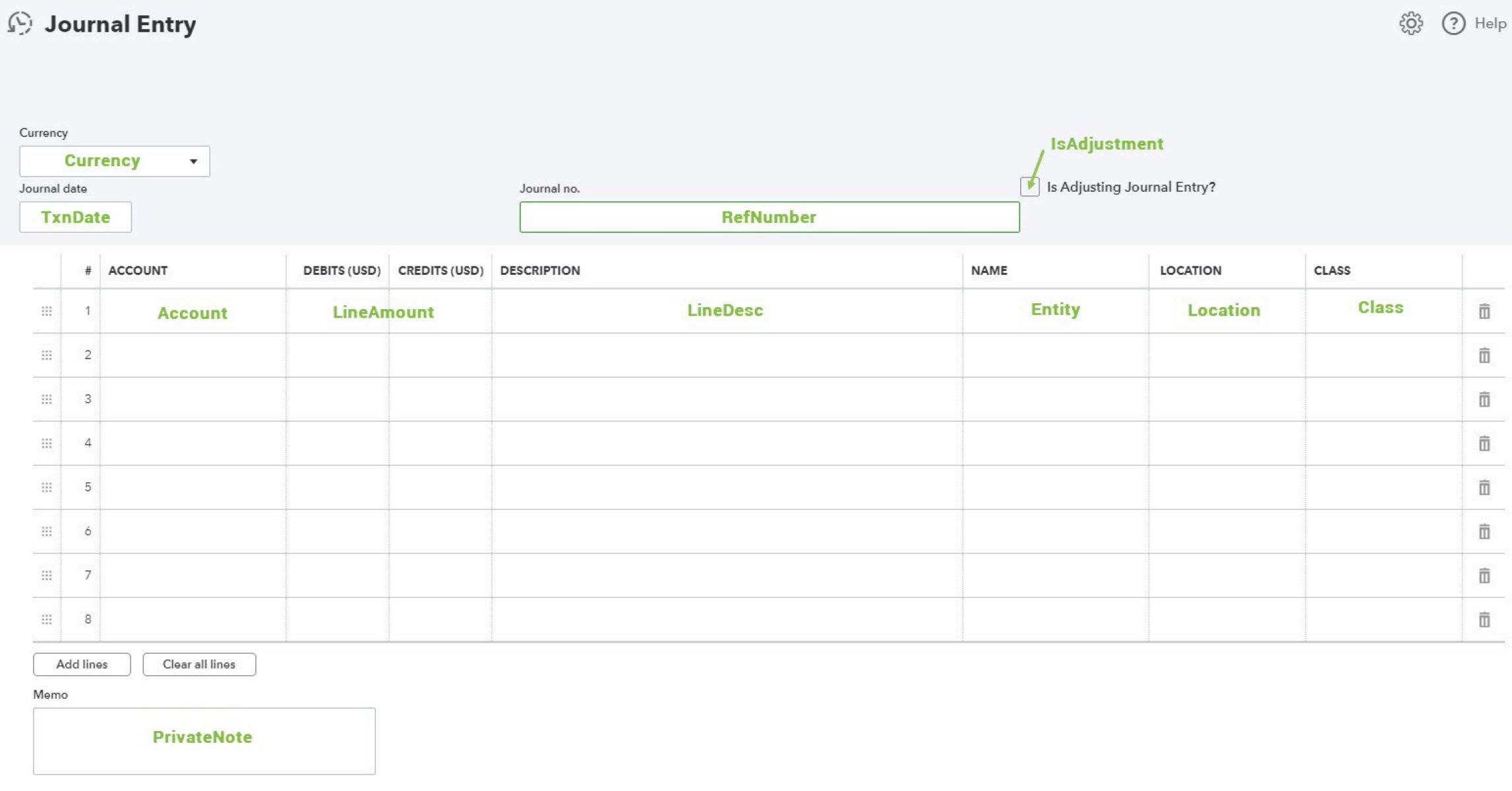Introduction
Welcome to our comprehensive guide on how to import Excel to QuickBooks! QuickBooks is a widely used accounting software that helps businesses manage their financials efficiently. However, manually inputting data into QuickBooks can be time-consuming and prone to errors. That’s where importing Excel data comes in handy.
In this guide, we will walk you through the process of importing Excel data into QuickBooks. Whether you’re using QuickBooks Desktop or QuickBooks Online, we’ve got you covered. We’ll also provide troubleshooting tips to help you overcome any challenges you may encounter.
Importing Excel data allows you to seamlessly transfer your existing financial records, customer information, product details, and more into QuickBooks. This not only saves you time but also ensures accurate data entry, reducing the risk of mistakes.
Before we dive into the technical details, let’s take a closer look at what QuickBooks is and why importing Excel data can be beneficial for your business.
What is QuickBooks?
QuickBooks is a popular accounting software developed by Intuit. It is designed to help small and medium-sized businesses manage their finances effectively. With QuickBooks, businesses can track income and expenses, create invoices, manage inventory, generate financial reports, and streamline various financial tasks.
QuickBooks offers two main versions: QuickBooks Desktop and QuickBooks Online. QuickBooks Desktop is installed on your computer and allows offline access to your financial data. On the other hand, QuickBooks Online is a cloud-based solution that provides remote access to your information from any internet-connected device.
Due to its user-friendly interface and powerful features, QuickBooks has become the go-to accounting software for many businesses. It offers a range of tools and functionalities that cater to different industries and business needs. Whether you’re a freelancer, a small business owner, or a bookkeeper, QuickBooks can offer the financial management capabilities you require.
With QuickBooks, you can efficiently track income and expenses, create and send professional-looking invoices, manage payroll, reconcile bank transactions, generate financial reports, and even prepare tax documents. The software automates many tedious tasks, saving you time and reducing the risk of errors.
Additionally, QuickBooks provides integrations with other business tools and services, allowing you to streamline your operations further. You can connect QuickBooks to your bank accounts, payment processors, CRM systems, and e-commerce platforms to automate data synchronization and simplify your financial management processes.
Now that we have a better understanding of what QuickBooks is, let’s explore why importing Excel data into QuickBooks can be beneficial for your business.
Why Import Excel to QuickBooks?
Importing Excel data to QuickBooks offers several advantages for businesses of all sizes. Let’s explore why it is beneficial to seamlessly transfer data from Excel spreadsheets to QuickBooks:
1. Save Time and Increase Accuracy: Manually entering data into QuickBooks can be time-consuming and prone to errors. By importing Excel data, you can automate the process and significantly reduce the time spent on data entry. This not only saves valuable time but also minimizes the risk of transcription errors that can occur during manual input.
2. Preserve Data Integrity: Excel spreadsheets often contain vital financial information, including sales records, customer details, and expense data. Importing this data into QuickBooks ensures the accuracy and integrity of your financial information. It eliminates the need to re-enter data, reducing the chances of typos or mistakes that can lead to incorrect financial reporting.
3. Seamless Transition: If you are migrating from another accounting software or transitioning from manual bookkeeping to QuickBooks, importing Excel data allows for a smooth transition. Rather than starting from scratch, you can bring in your existing data directly into QuickBooks, ensuring continuity and preserving historical records.
4. Improved Reporting and Analysis: QuickBooks offers powerful reporting and analysis capabilities that provide valuable insights into your business’s financial health. By importing Excel data, you can leverage these features to generate comprehensive financial reports, track key performance indicators, and make informed business decisions based on accurate and up-to-date information.
5. Customization Options: QuickBooks allows you to customize the imported data to suit your specific business needs. You can map Excel data fields to corresponding fields in QuickBooks, ensuring that the imported data is accurately categorized. This flexibility allows you to customize your financial records and tailor them to match your unique business requirements.
6. Scalability and Efficiency: As your business grows, managing financial data in Excel spreadsheets can become cumbersome and inefficient. QuickBooks offers robust financial management features that can handle the increasing complexity of your business’s financial requirements. By importing Excel data, you can leverage QuickBooks’ scalability and efficiency to streamline your financial processes and support your business’s growth.
Now that we understand the benefits of importing Excel data to QuickBooks, let’s move on to the next section, where we will discuss how to prepare your Excel data for the import process.
How to Prepare Your Excel Data
Before importing your Excel data into QuickBooks, it is essential to prepare the spreadsheet to ensure a smooth and successful import. Follow these steps to properly format and organize your Excel data:
1. Header Row: The first row of your Excel spreadsheet should contain the headers that define each column’s data. Make sure the headers accurately reflect the information in each column, such as “Date,” “Customer Name,” “Product Name,” “Quantity,” “Price,” etc.
2. Column Format: Ensure that the data in each column is consistent and correctly formatted. For example, dates should be in a standard format (e.g., mm/dd/yyyy), numbers should be in numerical format, and text should not contain any special characters or symbols that may cause issues during the import process.
3. Data Accuracy: Review your Excel data and verify its accuracy. Check for any missing or duplicate entries, incorrect calculations, or inconsistencies that may affect the integrity of your financial records. Correct any errors or discrepancies before proceeding with the import.
4. Data Cleanup: Remove any unnecessary or irrelevant data that is not required for the import process. This helps streamline the import process and reduces the risk of importing unwanted data into QuickBooks.
5. Data Mapping: Familiarize yourself with the data mapping requirements in QuickBooks. Determine which fields in your Excel data correspond to specific fields in QuickBooks. This will ensure that the imported data is accurately matched and categorized within QuickBooks.
6. Save as CSV: Save your Excel file as a CSV (Comma Separated Values) file. This file format is commonly used for data import purposes and ensures compatibility with QuickBooks. To save as CSV, click on “File” > “Save As” and choose the CSV file format.
7. Backup Your Excel File: It’s always good practice to create a backup of your original Excel file before proceeding with the import. This ensures that you have a copy of the untouched data in case any issues or errors arise during the import process.
By following these steps and preparing your Excel data appropriately, you can ensure a smooth and successful import into QuickBooks. In the next sections, we will explore how to import Excel data into QuickBooks Desktop and QuickBooks Online, respectively.
Importing Excel to QuickBooks Desktop
Importing Excel data into QuickBooks Desktop is a straightforward process that allows you to seamlessly transfer your financial information. Follow these steps to import your Excel data into QuickBooks Desktop:
1. Launch QuickBooks Desktop: Open QuickBooks Desktop on your computer and ensure that you have the necessary permissions and access rights to import data.
2. Access the Import Data Tool: In the main menu, go to “File” > “Utilities” > “Import” > “Excel Files”. This will open the Import Excel Data wizard.
3. Choose a Spreadsheet: Click on “Browse” to locate and select the Excel spreadsheet you want to import. Choose the correct file and click “Open”.
4. Select a Worksheet: If your Excel workbook contains multiple worksheets, select the appropriate worksheet that contains the data you want to import.
5. Map Your Data: The next step involves mapping your Excel data fields to corresponding fields in QuickBooks. Review the available options and select the matching fields for each column in your Excel spreadsheet.
6. Review and Import: Once you have mapped all the necessary fields, review the summary screen that displays how the data will be imported into QuickBooks. Make any necessary adjustments or corrections if needed.
7. Import Confirmation: After reviewing the import summary, click “Import” to start the import process. QuickBooks will display a confirmation message when the import is completed successfully.
8. Verify Imported Data: Once the import is complete, navigate to the affected sections within QuickBooks Desktop and verify that your Excel data has been imported correctly. Review financial reports, customer records, transaction history, and other relevant areas to ensure the accuracy of the imported data.
It is important to note that the import process may vary slightly depending on the version and year of QuickBooks Desktop you are using. Be sure to consult the official QuickBooks documentation or contact QuickBooks support for specific instructions tailored to your version.
In the next section, we will discuss how to import Excel data into QuickBooks Online, a cloud-based version of QuickBooks.
Importing Excel to QuickBooks Online
Importing Excel data into QuickBooks Online allows you to seamlessly transfer your financial information to the cloud-based accounting platform. Follow these steps to import your Excel data into QuickBooks Online:
1. Sign In to QuickBooks Online: Log in to your QuickBooks Online account using your credentials. Ensure that you have the necessary permissions to import data.
2. Access the Import Data Tool: From the main dashboard, navigate to the “Gear” icon in the upper-right corner, then select “Import Data” under the “Tools” section.
3. Choose a Spreadsheet: Click on the “Browse” button to locate and select the Excel spreadsheet you want to import. Choose the correct file from your computer and click “Open”.
4. Map Your Data: Next, you will need to map the fields in your Excel spreadsheet to corresponding fields in QuickBooks Online. Review the available options and select the appropriate fields for each column in your Excel data.
5. Review and Import: Once you have mapped the fields, review the summary screen that displays how the data will be imported into QuickBooks Online. Make any necessary adjustments or corrections if needed.
6. Import Confirmation: After verifying the import summary, click “Import” to start the import process. QuickBooks Online will display a confirmation message when the import is completed successfully.
7. Verify Imported Data: Once the import is complete, navigate to the relevant sections within QuickBooks Online and verify that your Excel data has been imported correctly. Review financial reports, customer records, transaction history, and any other relevant areas to ensure the accuracy of the imported data.
It is important to note that the import process may vary slightly depending on the version and subscription plan of QuickBooks Online you are using. If you encounter any issues or need further assistance, refer to the official QuickBooks Online documentation or reach out to QuickBooks support for guidance tailored to your specific version.
In the next section, we will provide some troubleshooting tips to help you overcome any challenges that may arise during the import process.
Troubleshooting Tips
Importing Excel data into QuickBooks may occasionally encounter some challenges. Here are some troubleshooting tips to help you overcome common issues during the import process:
1. Data Format Issues: Ensure that your Excel data is properly formatted and matches the requirements of QuickBooks. Check for any special characters, leading or trailing spaces, or formatting inconsistencies that may disrupt the import. Correcting these issues can help avoid errors during the import process.
2. File Compatibility: Verify that you are using a compatible file format when importing your Excel data. QuickBooks typically supports CSV (Comma Separated Values) and XLS/XLSX (Excel) file formats. Convert your Excel spreadsheet to the appropriate file format if needed.
3. Field Mapping Errors: Double-check your field mapping to ensure that each column in your Excel data is accurately matched with the corresponding field in QuickBooks. Mismatched mappings can lead to incorrect data placement and cause discrepancies after the import. Review the import mapping settings and make any necessary adjustments.
4. Data Validation: Before importing your Excel data, perform a thorough validation and cleanup process. Check for any missing or invalid data entries, such as blank cells or inconsistent formats. Correcting errors and ensuring data accuracy in your Excel spreadsheet can prevent issues during the import process.
5. Import Limitations: Understand the limitations of QuickBooks when it comes to importing data. Certain data fields or types may not be supported for import. For instance, complex formulas, custom workflows, or special characters in text may require manual adjustment after the import. Ensure that your Excel data aligns with the import capabilities of QuickBooks.
6. File Size and Structure: Large Excel files or complex data structures can cause import-related issues. Break down your data into smaller, manageable chunks if necessary. Simplify your data structure and remove any unnecessary columns or sheets to streamline the import process.
7. Backup and Retry: Always create a backup of your original Excel file before importing. In case the import process encounters errors or unexpected outcomes, you can revert back to the backup and try again with modified approaches or data adjustments.
If you encounter persistent issues during the import process, consider reaching out to QuickBooks support or consulting online forums and communities for further assistance. These resources can provide specific guidance tailored to your particular situation.
With these troubleshooting tips in mind, you are better equipped to address potential challenges and ensure a successful import of your Excel data into QuickBooks.
Conclusion
Importing Excel data into QuickBooks is a valuable tool that can save time, improve accuracy, and streamline your financial management processes. Whether you are using QuickBooks Desktop or QuickBooks Online, the import process allows you to seamlessly transfer your Excel data into the accounting software.
In this guide, we have covered the importance of importing Excel data to QuickBooks and provided step-by-step instructions for both QuickBooks Desktop and QuickBooks Online. We discussed the benefits of importing Excel data, including time savings, data integrity preservation, and improved reporting and analysis capabilities.
We also highlighted the importance of properly preparing your Excel data to ensure a successful import. By organizing and formatting your data correctly, mapping the fields accurately, and verifying the data integrity, you can avoid common issues and import your data seamlessly.
Additionally, we shared troubleshooting tips to address any challenges you may encounter during the import process. From data format issues to file compatibility and field mapping errors, these tips will help you overcome obstacles and ensure a smooth import experience.
Remember, if you encounter persistent issues during the import process or require further assistance, it’s always a good idea to consult the official QuickBooks documentation or reach out to QuickBooks support for tailored guidance.
By following the steps outlined in this guide, you can leverage the power of QuickBooks and import your Excel data efficiently. This enables you to have accurate, up-to-date financial information at your fingertips, empowering you to make informed business decisions and streamline your financial management processes.
So, why spend hours manually entering data into QuickBooks when you can import it from Excel? Take advantage of this powerful feature and make your financial management tasks easier and more efficient.
Start importing your Excel data today and unlock the full potential of QuickBooks for your business.

























